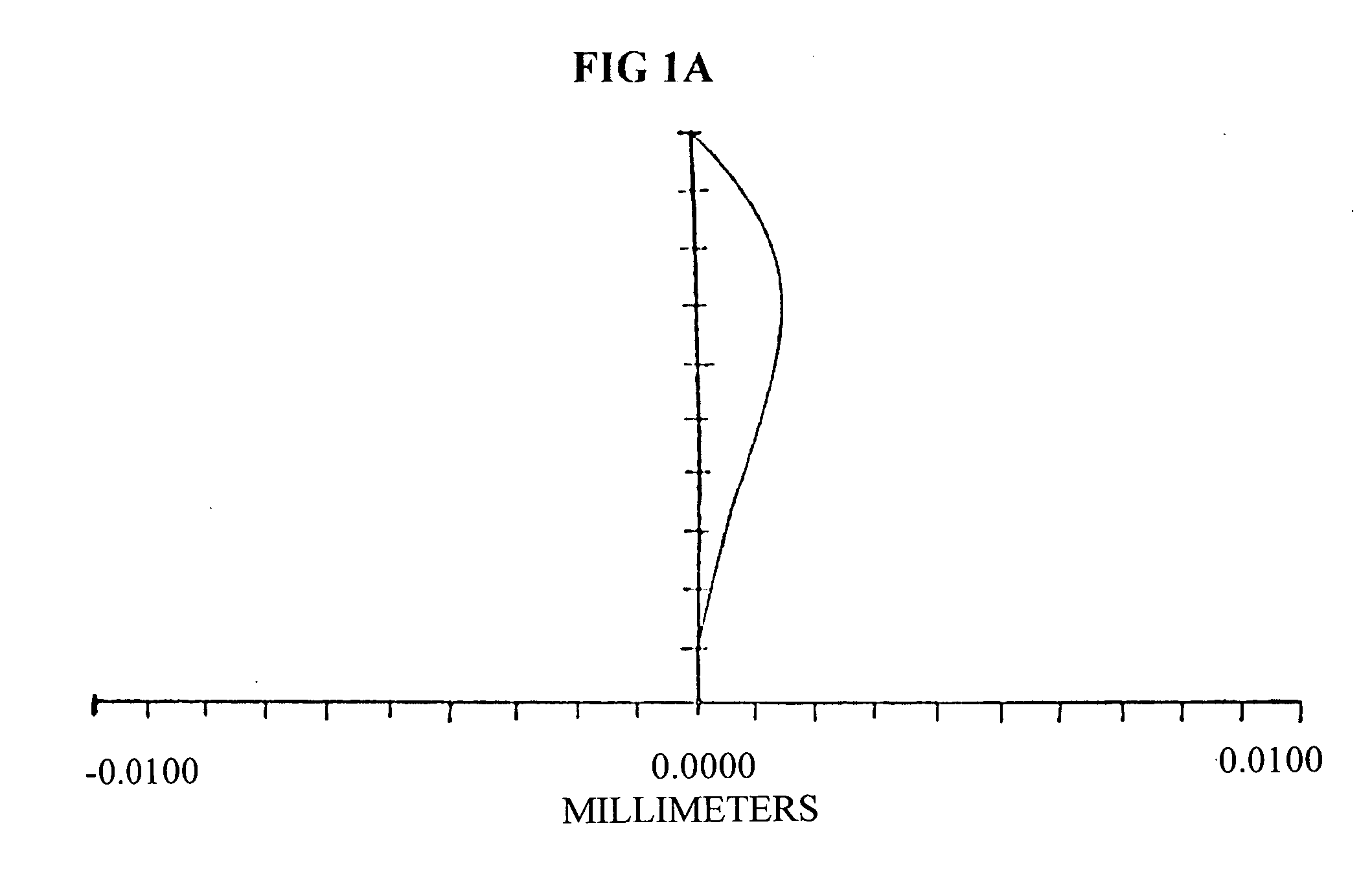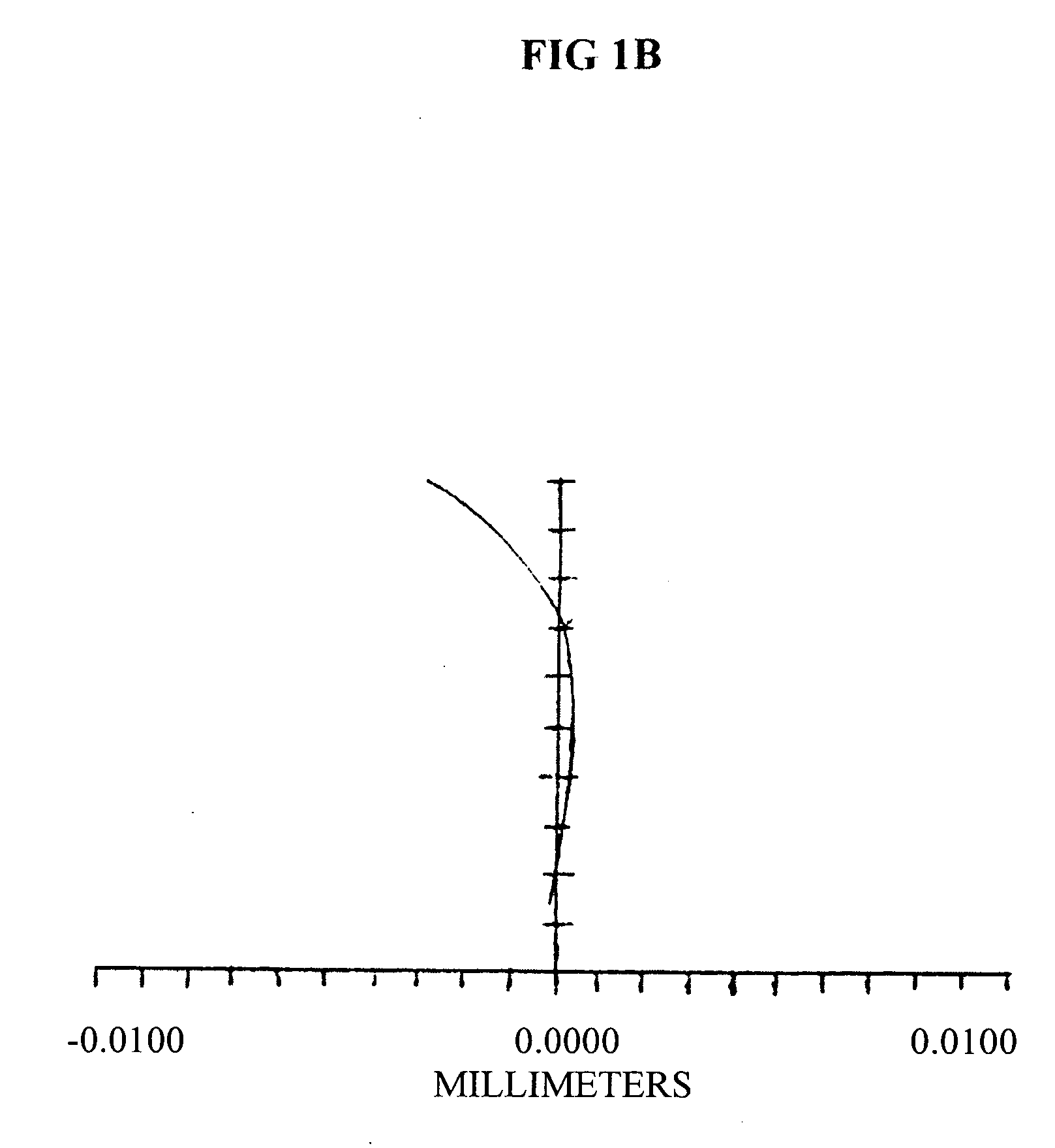Method of designing equal conic intraocular lens
- Summary
- Abstract
- Description
- Claims
- Application Information
AI Technical Summary
Problems solved by technology
Method used
Image
Examples
Embodiment Construction
[0012] Given that the B-IOL must have symmetric surfaces (design requirement) and the paraxial power of the lens is the labeled power, the only true design parameter is the conic coefficient K. It is possible to set the conic constant so that the marginal ray (which just clears the edge of the clear aperture of the lens) for a distant object intersects the paraxial focus. The distance between the intersection of the off-axis ray with the optical axis and the paraxial focus is called the longitudinal aberration of the ray. For the case of zero longitudinal aberration at the marginal ray, the longitudinal aberration across the semi-diameter is graphed in FIG. 1.A. Note that in FIG. 1.A, the aberration at ray height of zero (the chief ray) is zero as is the ray at the edge of the lens. To reduce the overall sum of the longitudinal aberration, we can alternatively select the conic coefficient so that a ray at a height equal to 0.7071 of the clear aperture radius intersects the paraxial ...
PUM
 Login to View More
Login to View More Abstract
Description
Claims
Application Information
 Login to View More
Login to View More - R&D
- Intellectual Property
- Life Sciences
- Materials
- Tech Scout
- Unparalleled Data Quality
- Higher Quality Content
- 60% Fewer Hallucinations
Browse by: Latest US Patents, China's latest patents, Technical Efficacy Thesaurus, Application Domain, Technology Topic, Popular Technical Reports.
© 2025 PatSnap. All rights reserved.Legal|Privacy policy|Modern Slavery Act Transparency Statement|Sitemap|About US| Contact US: help@patsnap.com



